Posts Tagged ‘Cottonera’
-
Gone but not forgotten
“St. George Preca used to say that the cemetery is the biggest book and I had the opportunity to confirm that,” revealed a Capuchin friar who served as a custodian of the Addolorata cemetery for some years. Living among the dead, day and night, helped him to learn much about humanity and its weaknesses.
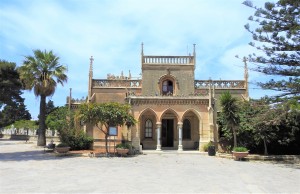 “The Capuchin friars were selected by the British authorities to administer this cemetery because they were loved by the locals. They had always been the ones who stood by the people during the worst moments and in situations which others avoided,” explained researcher Eman Bonnici.
“The Capuchin friars were selected by the British authorities to administer this cemetery because they were loved by the locals. They had always been the ones who stood by the people during the worst moments and in situations which others avoided,” explained researcher Eman Bonnici.“The British authorities hoped to attract people to bury their dead at the Addolorata cemetery. One of the best architects, Emanuele Luigi Galizia, was chosen to design this magnificent cemetery which took seven years to construct at the expense of £33,000. However, a well thought strategy was also required since this necessitated a considerable culture change within Maltese society.”
“Around 150 years ago, no one was buried in a cemetery except for those who died of contagious diseases or prisoners who were hanged. People buried their loved ones within the churches, chapels and crypts of their towns and villages to keep them close and within sacred grounds. Yet authorities considered this custom as a time bomb for some epidemic catastrophe. From time to time, outbursts of plague and cholera appeared on the islands, and it took days before the malady was identified. Case in points were the first plague victims of 1675 and 1813. Both were buried at Ta’ Ġieżu in Valletta, right at the capital city which was densely populated.”
“Initially, the Addolorata cemetery was intended to serve as a burial site for Catholics who were from Cottonera, Floriana and Valletta. As an incentive to start a new chapter in burial custom, those who had a private grave in any of these areas, were offered the possibility to choose a space in this cemetery and their grave would be dug for free. They were also given the privilege to use the cemetery’s church for burial rites and prayers before their loved ones were laid to rest. A further benefit consisted of a daily mass which was celebrated in this church and dedicated to all those who were buried within the cemetery.”
“Although a new law passed in 1863 prohibited further burials within churches, and the Addolorata cemetery was blessed and consecrated in 1869 to be ready for use, it was not that easy to convince the local population who had very strong beliefs related to death and burial customs. No one wanted to bury their dead in the new cemetery. Until one day, a poor woman from Naxxar who lived in Mosta, 64 year old Anna Magro, died at the general hospital, and since she had no relatives, she was the first one to be buried at this cemetery. Some time later, a number of people from Cospicua decided to accept the offer to have their own graves at the Addolorata, and from then, things moved on.”
The custodian’s role of the Addolorata cemetery was quite challenging. He had the responsibility of all the administration of the cemetery which included the registration of burials, the issuing of burial permits, the applications for new graves, the research for the public about the deceased and their graves, the maintenance of the cemetery and its church, the management of the workers, the distribuition of salaries which was still given out in money, the celebration of daily mass, and the hearing of confessions and spiritual advice.
“Originally the friars who acted as custodians were expected to spend the night at the cemetery. I spent around five years living at the cemetery together with a brother who was responsible to cook for me and to take care of the cemetery’s church. Although the brother resided at the cemetery for the whole year, friars alternated every week,” explained the friar.
“I was shocked when I was requested to become a cemetery custodian. I had studied philosophy and theology, and I had no idea whatsoever about the administration of a cemetery. However, my Provincial promised me that he would provide me with all the necessary assistance and so I accepted the role.”
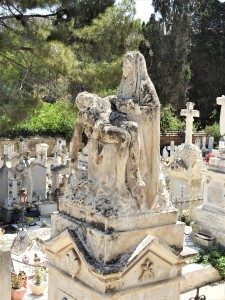 “Ironically, this work was a blessing in disguise! I had never imagined that the very place connected to death would fill my life with such significant experiences. A cemetery gets you in contact with all the levels of society, from the poorest to the richest, from the average person to the most successful. You learn a lot about humanity’s weaknesses and strengths, about love and hate, about repentance and revenge, about the excruciating suffering of illnesses and death. Ultimately, when the time came, it was actually difficult to leave this role.”
“Ironically, this work was a blessing in disguise! I had never imagined that the very place connected to death would fill my life with such significant experiences. A cemetery gets you in contact with all the levels of society, from the poorest to the richest, from the average person to the most successful. You learn a lot about humanity’s weaknesses and strengths, about love and hate, about repentance and revenge, about the excruciating suffering of illnesses and death. Ultimately, when the time came, it was actually difficult to leave this role.”“Some of my experiences at the cemetery are simply unforgettable. Some of them fill me with distate, others chill me to the bone, while a number of them remind me of the unexplainable power of prayer, love, hope and belief. At times, the pain and suffering which I had to deal with became unbearable and I had to seek out the comfort of the convent. More than the freezing cold of the night which reigned within those historical rooms, it was the distressful questions which people confronted me with, day after day, which affected me most.”
“Why is your God doing this to me?” asked a woman while carrying her sixth dead foetus for burial. “Her husband had brought the previous five and I had prayed with him and listened to his suffering. It was the first time that I was facing his wife and the news of yet another miscarriage was intensely sad and shocking. In moments like those, I asked God to guide me and he never failed to assist me. This is not the work of God but of nature, I told her. God would never do this to you! Give a name to each child and pray for each and to each one of them and you will find peace.”
“Around five years passed from this incident. Then, one day, the brother informed me that a couple needed to speak to me. I went out to meet them and they reminded me of their story. ‘I did just like you advised’, the woman told me. ‘And now we have him,’ she said as she reached out to a pram with a beautiful little baby boy inside.”
Stories poured out from the friar. He was still so emotional about them, as if they had just happenned the day before.
“On a very cold and rainy day in February, a smart and well-dressed man came to knock at my door. He gave me a grave number and I informed him that it was located in the common graves’ area. The man asked me to accompany him with a car to see this grave and I drove him there.”
“As soon as I pointed out the grave, the man jumped out of the car, fell to his knees on the ground and began to cry out for his mother’s forgiveness. ‘Forgive me mum! It was not my fault!’ he repeated over and over again while the heavy rain rammed on his back. I felt so distraught for him but eventually I managed to pull him back in the car and help him to calm down.”
“He told me the story of how forty years before, his mother and his wife had a quarrel, and his wife threatened to leave him if he ever got in contact with his mother again. She even forbid him from going to his mother’s funeral, calling him twice at his office on that day to confirm that he had abided to her rules. ‘We have four children and I did not want to mess up my family,’ he informed me, leaving me dumbfounded.”
It was very compelling to witness such hate and thirst for revenge, even after death.
“One day I was asked to give advice to a very affluent man who came to buy a plot to construct a chapel in the cemetery. He was insisting that only he and his wife, their children and their offsprings could be buried in this chapel, leaving out all his sons’ wives, explicitly named in a contract. I told him that this was very uncharitable on his part but he was resolute. I warned him that on knowing about this, his sons would curse him and his wife but he brushed this comment off, ensuring me that he was leaving them all well off.”
“The old couple died and they were buried in the chapel. All went well until one of his sons was widowed. He came to us to make arrangements for his wife’s burial in the family chapel. As soon as he identified himself, I braced myself for trouble since it was clear that he knew nothing about his parents’ decision. He could not believe his ears when we informed him that he could not bury his wife in the chapel. He got so angry and swore so badly, cursing his parents over and over again, that we had to threaten him with the police. Matters worsened further when he realized that this condition affected also all his brothers. He called them all and they came to the cemetery in a frenzy, infuriated at this unexpected news.”
“No matter how much they insisted with us to eliminate this condition, there was nothing we could do. The woman had to be buried in a new grave. All the other brothers bought a new grave too. Their parents’ richly adorned and expensive chapel now lies abandoned and in ruins.”
Nowadays the cemetery is no longer administered by the Capuchin friars.
(This article was published in the SENIOR TIMES – NOVEMBER issued with The Times of Malta on 15th November 2018)
-
FROM STORIES TO HISTORY
For hundreds of years, the recording of the past focused on public records, statistical data and the lives of prominent people. Yet in recent decades, the spotlight turned onto the general public and its memories in order to provide a more accurate picture of the historic narrative.
 “People who have lived through particular events can contribute different viewpoints and perspectives that fill in the gaps of documented history, at times correcting or even contradicting the written record. The project MEMORJA aims to give a voice to those who have been unheard,” explained James Baldacchino, the administrator of the MEMORJA Project.
“People who have lived through particular events can contribute different viewpoints and perspectives that fill in the gaps of documented history, at times correcting or even contradicting the written record. The project MEMORJA aims to give a voice to those who have been unheard,” explained James Baldacchino, the administrator of the MEMORJA Project.MEMORJA is an oral, sound and visual archive. Its main objective is to employ cutting edge research, methodologies, theoretical and archival approaches and techniques to collect, record, transcribe, preserve and make available and retrievable all the deposited material detailing the islands’ history.
“Work on this project has begun in January 2017. This is a new platform which is giving an additional dimension to the National Archives since this time, it is not only collecting records but reaching out to create them.”
At the early stages of the project, four themes were selected, namely the Second World War, British expatriates in Malta, public administration and the Lampedusa-Malta connection.
 “The theme related to experiences during the Second World War aims to document and record a past which is slowly disappearing from public memory especially with the passing away of the older generation. Oral testimonies and photographs serve to recollect the terrible years of war and what the people have lived through in those times. Stories of the outbreak of hostilities and the first bombings on June 11, 1940, the mass evacuations and refugee experiences, fear and uncertainty, hunger and the Victory Kitchens, shelters and sanitation, soldiers and sirens, and tragedies of bombings are part of the significant remembrance which needs to be collected and preserved for future generations before it is lost for good.”
“The theme related to experiences during the Second World War aims to document and record a past which is slowly disappearing from public memory especially with the passing away of the older generation. Oral testimonies and photographs serve to recollect the terrible years of war and what the people have lived through in those times. Stories of the outbreak of hostilities and the first bombings on June 11, 1940, the mass evacuations and refugee experiences, fear and uncertainty, hunger and the Victory Kitchens, shelters and sanitation, soldiers and sirens, and tragedies of bombings are part of the significant remembrance which needs to be collected and preserved for future generations before it is lost for good.”The history of the relationship between the UK and Malta is another central theme which has not been documented through the eyes of the British and Maltese individuals.
 “This section includes interviews with British and British-Maltese people who were either in the British forces during the 1960’s (or their spouses) and remained in Malta, or civilians who married a Maltese person and relocated to Malta. Such recordings open a window on everyday life in Malta during the 1950s – 1970s. Much of the narratives relate to military bases, post-war experiences, political issues, relationships and cultural differences. This theme was further expanded when the experience of service families’ children was included as well. These children had attended the Naval Childrens’ School and HM Dockyard Children’s School which had occupied sites at Ta’ Xbiex, Cottonera, Senglea and the Dockyard before moving to Tal-Ħandaq.”
“This section includes interviews with British and British-Maltese people who were either in the British forces during the 1960’s (or their spouses) and remained in Malta, or civilians who married a Maltese person and relocated to Malta. Such recordings open a window on everyday life in Malta during the 1950s – 1970s. Much of the narratives relate to military bases, post-war experiences, political issues, relationships and cultural differences. This theme was further expanded when the experience of service families’ children was included as well. These children had attended the Naval Childrens’ School and HM Dockyard Children’s School which had occupied sites at Ta’ Xbiex, Cottonera, Senglea and the Dockyard before moving to Tal-Ħandaq.”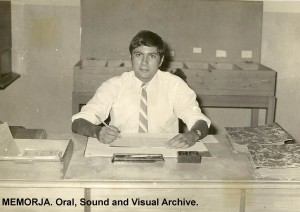 Civil servants are often regarded as those who are implementing the Goverment’s policies. However, through their memories we can get a glimpse of what happenned ‘behind the scenes’ during the most important political, social and economic decisions undertaken by Maltese political leaders.
Civil servants are often regarded as those who are implementing the Goverment’s policies. However, through their memories we can get a glimpse of what happenned ‘behind the scenes’ during the most important political, social and economic decisions undertaken by Maltese political leaders.“These include background revelations of what was taking place during the granting of Independence in 1964, the dismantling of the British military base in 1979 and how the Maltese prepared for such an event, membership in the EU and how it affected the civil service, the migration of the hospital from St Lukes to Mater Dei and many other memorable challenges.”
Lampedusa and Malta are two islands with different political histories. Yet to some extent they share similar economic, trade and socio-cultural interest.
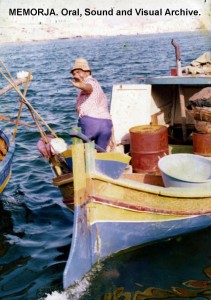 “We have an interest in Lampedusa since in the early 1800s, there were a number of Maltese settlers on this island. Until now, no one had attempted to record these people’s history in order to understand the link between the two islands. The MEMORJA Project is focusing on two time frames to investigate the islands’ shared history. The first one relates to the period from 1800 – 1843 when Lampedusa was colonised by Maltese settlers working in agriculture and animal husbandry. The second covers the period between the 1950s and the 1980s when Lampedusani fishermen visited Malta regularly for the maintenance of ships, the sale of blue fish and the provision of supplies.”
“We have an interest in Lampedusa since in the early 1800s, there were a number of Maltese settlers on this island. Until now, no one had attempted to record these people’s history in order to understand the link between the two islands. The MEMORJA Project is focusing on two time frames to investigate the islands’ shared history. The first one relates to the period from 1800 – 1843 when Lampedusa was colonised by Maltese settlers working in agriculture and animal husbandry. The second covers the period between the 1950s and the 1980s when Lampedusani fishermen visited Malta regularly for the maintenance of ships, the sale of blue fish and the provision of supplies.”As the team of the MEMORJA Project reached out to people, they were soon welcomed by the different communities who were eager to share their recollections.
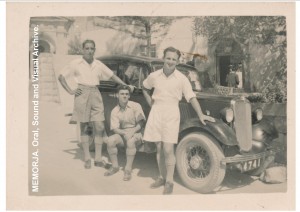 “We found a huge amount of data which existed only in the minds of people and in their photos. Many individuals were enthusiastic to make their voice heard in order to help out with the shaping of the public’s narrative which up to now was not formally recorded for posterity. Even though we have four selected themes, it does not exclude us from recording other memories as well which we deem to be of importance to form part of the community memory.”
“We found a huge amount of data which existed only in the minds of people and in their photos. Many individuals were enthusiastic to make their voice heard in order to help out with the shaping of the public’s narrative which up to now was not formally recorded for posterity. Even though we have four selected themes, it does not exclude us from recording other memories as well which we deem to be of importance to form part of the community memory.”The search for the stories which make the history is still going on. The final goal of the MEMORJA Project which will be officially launched later on this year will be to make this information accessible online for educational and research purposes.
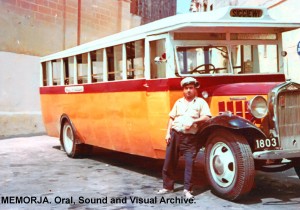 “Oral history allows people to express the personal consequences of change, from the simplest things in life to the more complex. It enables people to share their experiences in their own words, with their own voices, through their own understanding of what happened and why. Eventually, such documentation will offer depth to the understanding of the past to present and future generations.”
“Oral history allows people to express the personal consequences of change, from the simplest things in life to the more complex. It enables people to share their experiences in their own words, with their own voices, through their own understanding of what happened and why. Eventually, such documentation will offer depth to the understanding of the past to present and future generations.”If you are interested to contribute to the MEMORJA Project, you are invited to contact James Baldacchino on james.baldacchino@gov.mt or call 21459863.
The National Archives is located at ‘Santo Spirito’, Hospital Street, Rabat, Malta.
(This article was published in SENIOR TIMES – MAY 2018 issued with The Times of Malta dated 24 May 2018)
Travelogue
Archives
| M | T | W | T | F | S | S |
|---|---|---|---|---|---|---|
| « Jan | ||||||
| 1 | 2 | 3 | 4 | 5 | 6 | 7 |
| 8 | 9 | 10 | 11 | 12 | 13 | 14 |
| 15 | 16 | 17 | 18 | 19 | 20 | 21 |
| 22 | 23 | 24 | 25 | 26 | 27 | 28 |
| 29 | 30 | |||||
Recent Posts
- A MATTER OF FATE
- MALTA’S PREHISTORIC TREASURES
- THE MAGIC IS IN THE DETAIL
- THE SELLING GAME
- NEVER FORGOTTEN
- Ġrajjiet mhux mitmuma – 35 sena mit-Traġedja tal-Patrol Boat C23
- AN UNEXPECTED VISIT
- THE SISTERS OF THE CRIB
Comments
- Pauline Harkins on Novella – Li kieku stajt!
- admin on IL-KARNIVAL TRAĠIKU TAL-1823
- Albert on IL-KARNIVAL TRAĠIKU TAL-1823
- Martin Ratcliffe on Love in the time of war
- admin on 24 SENA ILU: IT-TRAĠEDJA TAL-PATROL BOAT C23